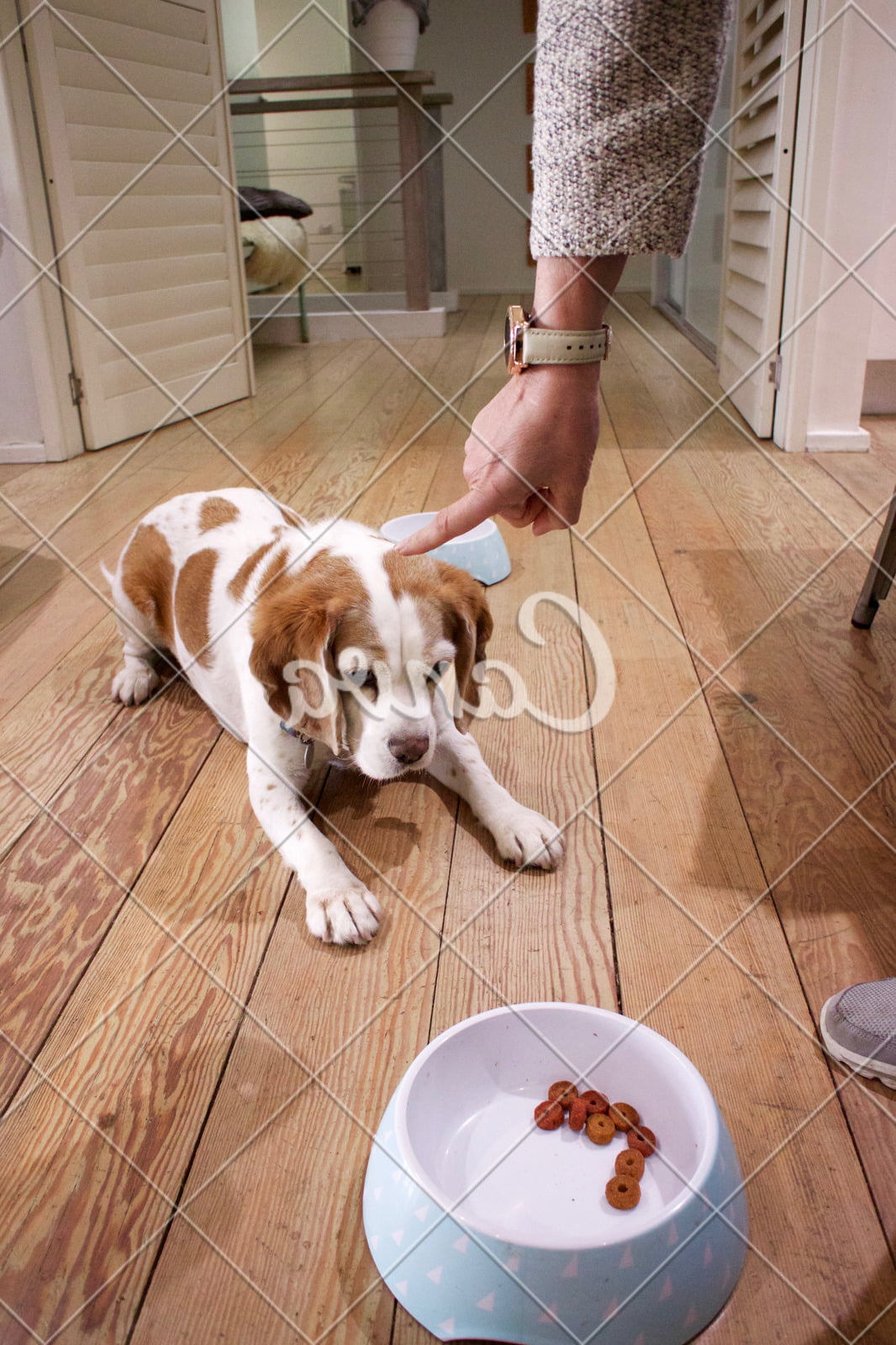Are you looking for the best training treats for dogs? Effective dog training often involves the use of tasty and motivating treats to reinforce desired behaviors in our furry friends. This article will explore the importance of choosing the right training treats, criteria for selecting the best ones, as well as top commercially available options and homemade recipes.
When it comes to dog training, using high-quality treats can make a significant difference in your pet’s progress. The right treats serve as a powerful motivator and can help create positive associations with new commands and behaviors. In this article, we will discuss how the proper use of training treats can greatly aid in your dog’s obedience and skills development.
As we delve into this topic, we’ll also address important considerations when selecting the best training treats, provide tips on effectively using them in dog training, and offer guidance on avoiding common mistakes. Whether you’re working with a puppy or an adult dog, understanding how to choose the ideal rewards is crucial for successful training sessions. So let’s get started on finding the best options for rewarding your furry companion during their learning journey.
Understanding the Importance of Choosing the Right Training Treats
When it comes to training your furry friend, using the best training treats for dogs is essential. These treats serve as positive reinforcement during training sessions, helping to motivate and reward your pup for their good behavior. Choosing the right training treats can make a significant impact on the effectiveness of your training efforts.
One of the most important factors to consider when choosing training treats for dogs is the quality of the ingredients. Look for treats that are made with high-quality, natural ingredients and are free from artificial additives and fillers. This will not only ensure that your dog is getting a nutritious reward, but it will also help prevent any potential digestive issues.
Another crucial aspect to consider when selecting training treats for dogs is their size and texture. Treats should be small enough for your dog to consume quickly, so they can continue with their training without too much interruption. Additionally, choose treats that have a soft texture, making them easy for your dog to chew and digest quickly.
When it comes to deciding which training treats are best for your canine companion, it’s essential to take into account any specific dietary restrictions or allergies they may have. Some dogs may have sensitivities to certain ingredients such as grains, soy, or certain types of protein. Be sure to carefully read the ingredient list and choose treats that align with your dog’s specific dietary needs.
- High-quality, natural ingredients
- Small size and soft texture
- Consider dietary restrictions or allergies
Criteria for Selecting the Best Training Treats for Dogs
When it comes to selecting the best training treats for dogs, there are a few key criteria to keep in mind. These criteria will help ensure that you choose treats that are not only appealing to your dog but also safe and nutritious. Here are some important factors to consider when choosing the right training treats for your canine companion:
1. Quality Ingredients: Look for training treats that are made with high-quality, natural ingredients. Avoid products that contain artificial flavors, colors, or preservatives. Opt for treats that are made with real meat, fruits, and vegetables.
2. Size and Texture: The ideal training treat should be small in size and easy to chew and swallow quickly. This will allow you to reward your dog frequently during training sessions without overfeeding them or slowing down their progress.
3. Nutritional Value: Choose training treats that provide some nutritional benefits in addition to being tasty. Treats fortified with vitamins, minerals, and antioxidants can contribute to your dog’s overall health and well-being.
4. Flavor Variety: Dogs, like humans, have specific flavor preferences. It’s a good idea to select training treats in a variety of flavors to keep your dog motivated and interested during training.
5. Low Calorie Count: Since you’ll be using training treats frequently during training sessions, it’s important to choose low-calorie options to avoid overfeeding your dog and causing weight gain.
By keeping these criteria in mind when selecting the best training treats for dogs, you can ensure that you’re providing your furry friend with rewards that are not only enjoyable but also beneficial to their health and development.
Top 5 Commercially Available Training Treats for Dogs
- Blue Buffalo Blue Bits Beef Recipe Dog Training Treats
- Zuke’s Mini Naturals Chicken Recipe Dog Training Treats
- Wellness Core Pure Rewards Turkey Recipe Dog Treats
- Merrick Power Bites Real Texas Beef Recipe Dog Treats
- Stella & Chewy’s Carnivore Crunch Cage-Free Duck Recipe Dog Treats
Homemade Training Treat Recipes for Dogs
- Peanut Butter Banana Pupcakes: Combine mashed banana, unsweetened peanut butter, whole wheat flour, eggs, and water; bake into mini cupcakes.
- Sweet Potato Chews: Slice sweet potatoes into thin strips; bake at low heat until crispy.
- Chicken and Vegetable Biscuits: Mix shredded chicken, pureed vegetables (carrots, peas), oats, and eggs; shape into biscuits and bake until firm.
Top 5 Commercially Available Training Treats for Dogs
When it comes to training your dog, having the best training treats for dogs is crucial for a successful and effective training session. The right treats can help motivate your furry friend and reinforce positive behavior. With so many options available, it can be overwhelming to choose the best ones for your dog. Here are the top 5 commercially available training treats for dogs that you should consider:
1. Zuke’s Mini Naturals Training Dog Treats: These small, soft treats are perfect for training sessions and come in a variety of flavors that dogs love. They are made with high-quality ingredients and are free from artificial preservatives.
2. Wellness Natural Grain Free Puppy Training Treats: Specifically designed for puppies, these treats are small, soft, and easy to chew, making them ideal for young dogs who are still learning.
3. Blue Buffalo Wilderness Trail Treats: Made with real meat as the first ingredient, these treats are packed with protein and have a crunchy texture that dogs enjoy. They come in different flavors and are free from grains and artificial additives.
4. Pet Botanics Training Reward: These moist, bite-sized treats are great for all breeds and sizes of dogs. They have a highly palatable flavor that makes them an excellent motivator during training.
5. Cloud Star Tricky Trainers Chewy Dog Treats: These soft, chewy treats are low in calories and come in several delicious flavors. They are perfect for teaching new tricks or obedience commands.
By choosing any of these top 5 commercially available training treats for dogs, you can ensure that your furry companion stays engaged and motivated during training sessions, leading to successful results.
Homemade Training Treat Recipes for Dogs
When it comes to training your dog, using the right treats can make a significant difference in the effectiveness of your sessions. While commercially available treats are convenient, homemade training treats can be just as effective and offer the added benefit of being tailored to your dog’s specific tastes and dietary needs.
One of the best homemade training treats for dogs is simple cooked chicken. Chicken is high in protein and low in fat, making it a healthy option for training rewards. Simply boil or bake boneless, skinless chicken breast, then cut it into small pieces as a tasty and nutritious treat for your furry friend.
Another great homemade option is sweet potato treats. Sweet potatoes are rich in fiber, vitamins, and minerals, making them a nutritious alternative to store-bought treats. You can easily make sweet potato treats by slicing sweet potatoes into thin rounds and baking them until they are crispy. Your dog will love the natural sweetness of these homemade snacks.
For dogs with sensitive stomachs or allergies, homemade training treats made with limited ingredients can be a great choice. Consider making simple oat and pumpkin dog treats by mixing oat flour and canned pumpkin puree, then cutting them into small pieces before baking. The simplicity of this recipe makes it ideal for dogs with dietary restrictions.
These homemade training treat recipes provide healthy and delicious options for rewarding your dog during training sessions. By using these recipes, you can ensure that you are providing your furry companion with the best possible rewards while also controlling the ingredients that go into their diet.
| Treat Name | Ingredients |
|---|---|
| Simple Cooked Chicken | Boneless, skinless chicken breast |
| Sweet Potato Treats | Sweet potatoes |
| Oat and Pumpkin Dog Treats | Oat flour, Canned pumpkin puree |
Considerations for Training Treats for Puppies vs Adult Dogs
When it comes to training treats for dogs, it’s essential to consider the age of your furry friend. Puppies and adult dogs have different nutritional needs and taste preferences, so it’s important to select the right treats for each stage of life.
Nutritional Needs
Puppies are still growing and developing, so they require a diet that supports their growth and provides essential nutrients. When choosing training treats for puppies, opt for options that are high in protein and other essential nutrients.
Look for treats that are specifically formulated for puppies to ensure that they are getting the nutrition they need during this crucial stage of development. On the other hand, adult dogs may require different nutrients such as glucosamine and omega-3 fatty acids to support joint health and overall well-being.
Taste Preferences
Puppies may be more inclined towards softer and smaller treats that are easier to chew due to their developing teeth. Additionally, their taste preferences may differ from those of adult dogs. For puppies, consider training treats with flavors like chicken or beef to entice them during training sessions. Adult dogs may have a wider range of taste preferences, so you can experiment with different flavors and textures based on their individual likes and dislikes.
Size and Texture
The size and texture of training treats also matter when considering puppies versus adult dogs. Puppies will benefit from smaller, softer treats that are easy for them to consume quickly during training sessions. On the other hand, adult dogs may prefer larger or crunchier treats that provide more satisfaction during training.
Considering these factors when choosing training treats for puppies versus adult dogs will help you ensure that you are providing the best possible rewards during training sessions. By selecting the right treats for your dog’s age and stage of life, you can make training sessions more effective and enjoyable for your furry companion.
Tips for Using Training Treats Effectively in Dog Training
Using training treats effectively in dog training is crucial for achieving the desired results. Here are some tips to ensure that you make the most out of your best training treats for dogs:
Choose High-Value Treats
When using treats for training, it’s important to choose options that are highly palatable and irresistible to your dog. Look for treats with strong flavors and appealing textures, as these will be more effective in capturing your dog’s attention and motivating them to perform the desired behavior.
Limit Treat Size
While it may be tempting to use large treats as a reward, it’s best to opt for smaller-sized treats during training sessions. This helps prevent overfeeding and keeps your dog focused on the task at hand. Consider breaking larger treats into smaller pieces to make them last longer without adding extra calories to your dog’s diet.
Use Variety
Introducing a variety of treat options can help maintain your dog’s interest during training. Rotating between different flavors and textures prevents boredom and keeps your dog engaged throughout the session. This could include a mix of commercial training treats and homemade options.
By incorporating these tips into your dog training routine, you can effectively utilize the best training treats for dogs to reinforce positive behaviors and strengthen the bond between you and your furry companion. Remember that consistency, patience, and positive reinforcement are key factors in successful dog training using treats.
Avoiding Common Mistakes When Using Training Treats for Dogs
In conclusion, it is clear that training treats play a crucial role in effective dog training. Choosing the right treats can make a significant difference in the success of your training sessions. By understanding the importance of selecting the best training treats for dogs and following specific criteria, you can ensure that your furry friend receives high-quality rewards that will motivate them to learn and perform desired behaviors.
The top 5 commercially available training treats provide a convenient option for pet owners who may not have the time or resources to prepare homemade treats. Additionally, the recipes provided for homemade training treats offer a cost-effective and customizable alternative for those who prefer to know exactly what ingredients go into their dog’s rewards.
When considering whether to use training treats for puppies versus adult dogs, it is essential to take into account the developmental stage, individual preferences, and dietary needs of each dog. Furthermore, employing tips for using training treats effectively in dog training can maximize their impact on your pet’s learning experience while avoiding common mistakes often made when using these incentives.
Frequently Asked Questions
What Are the Best Training Dog Treats?
The best training dog treats are small, soft, and highly palatable. This makes them easy for the dog to consume quickly and encourages them to stay engaged during training sessions. Look for treats that are specifically designed for training purposes, with high-value ingredients that your dog loves.
What Size Treats Are Best for Dog Training?
When it comes to choosing the size of treats for dog training, smaller is generally better. Tiny treats are ideal because they allow you to give frequent rewards during training without overfeeding your dog or causing distractions. Small treats also enable you to keep the focus on the training rather than on eating a large snack.
What Is the Best Dog Treat for Training?
The best dog treat for training is one that your dog absolutely loves and finds irresistible. Whether it’s freeze-dried liver, small cubes of cheese, or commercially available training treats, the key is finding something that motivates your dog and holds their attention during training sessions.
These treats should be nutritious and made with high-quality ingredients to support your dog’s overall well-being while they learn new behaviors.

Welcome to the blog! I am a professional dog trainer and have been working with dogs for many years. In this blog, I will be discussing various topics related to dog training, including tips, tricks, and advice. I hope you find this information helpful and informative. Thanks for reading!





